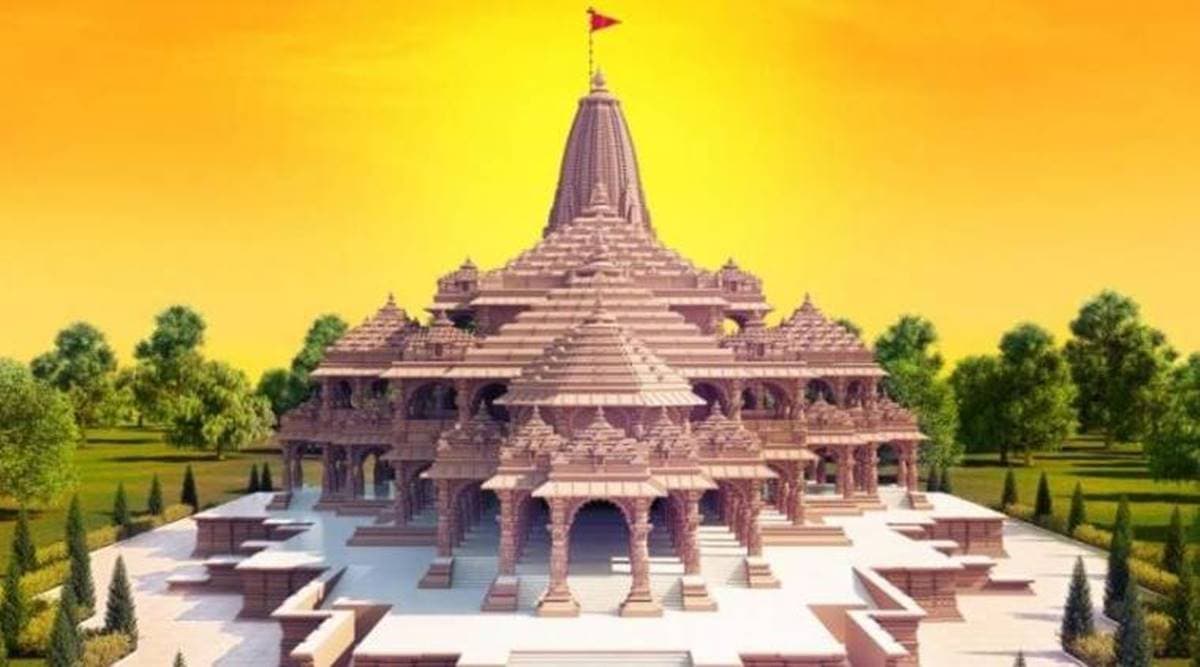 A computerised view of the Ram Temple in Ayodhya.
A computerised view of the Ram Temple in Ayodhya.As the temple construction committee set up by the Shri Ram Janmabhoomi Teerth Kshetra is working out the details of the Ram temple to be constructed in Ayodhya, Larsen & Toubro (L&T), which has been awarded the contract to build the temple, has contacted the Indian Institute of Technology, Madras (IIT-M) to provide expert help with the design as well as the quality of the concrete to be used.
The Trust members have said that the plan is to create a temple “grand enough to make Ayodhya be recognised as the centre of Hindu faith and strong enough to survive for more than 1,000 years.” Thus, the experts will first build a single pillar going deep in the ground and only after proper testing of its strength and if it is capable enough to hold the weight of the temple, they will go ahead with the rest of the pillars. The testing process is expected to take around a month.
According to the Trust members, the temple will have 1,200 pillars in total, each going 200 ft deep in the ground. Among the other things confirmed is that the on-ground construction including the digging of the rest of the pillars is expected to start after October 15 this year and the whole construction is planned to be completed in the next 39 months. Thus, the construction is expected to be completed by January in 2023.
Dr Manu Santhanam, Professor and head of the civil engineering department at IIT-M, said that they were recently approached by Larsen & Toubro for assessing the quality of the concrete to be used to ensure the service life. “We have not arrived at any methodology yet… we have been approached for advice. We are also yet to sign any agreement and things are in early stages. As of now, we are looking at the possible aspects of the construction and what sort of specific models will be utilised,” said Santhanam. Talking about the ideas in mind for a building that is planned to have the capability to survive for 1,000 years, he said the materials are to be chosen carefully and the concrete should be designed in such a way that whatever mechanisms of deterioration can affect the concrete do not have their impact in 1,000 years and not affect the stability of the structure.
“Ultimately, the soil is what is available there and that cannot be changed. Keeping in mind the soil and ground condition, we have to plan further. We have to ensure that certain checks and balances are maintained. Probably in the coming two-three weeks, we will start working on that,” he added.
Trust member Kameshwar Chaupal said that to ensure that the temple was “beautiful and strong enough,” they would consider every process suggested by experts and that all the known experts in the field were being contacted. “We have to build 1,200 pillars and for that 1200 holes are be dug. So the plan is that we will dig hole for a single pillar, then will fill it with concrete and after it solidifies, the experts will test the strength of the same. If satisfied that if the pillar is strong enough, we will go ahead with the other pillars,” said Chaupal.
Sources in Ayodhya said the hole for the pillar to be tested would be dug one metre in diameter and 100 ft deep using rig machines. The decisions were taken following a meeting between Trust General Secretary Champat Rai, temple construction committee head Nripendra Mishra and Larsen & Toubro engineers on Tuesday. IIT-Madras is expected to test the quality of the concrete used in the pillar. The Central Building Research Institute in Roorkee has also been contacted to provide expert help.
Earlier, the Trust had submitted a detailed plan of the Shri Ram Janmabhoomi Teerth Kshetra mandir yojana, spread across 2,74,110 square metres or more than 67 acres, to the Ayodhya Development Authority (ADA). According to the temple map, the temple will have an approach road 30 metres wide and the total covered area will be 12879.30 square meters. This include 2628.50 square metres (temple) and 7343.50 square metres corridor on the ground floor, 1850.70 square metres area on the first floor and 1.56.60 square metres area on the second floor.
Along with the map passed by the ADA, all clearances, such as certificates from the Nagar Nigam, Public Works Department (PWD), district administration, and from the authorities concerned for electrical safety, fire safety and anti-earthquake have been obtained by the Trust.